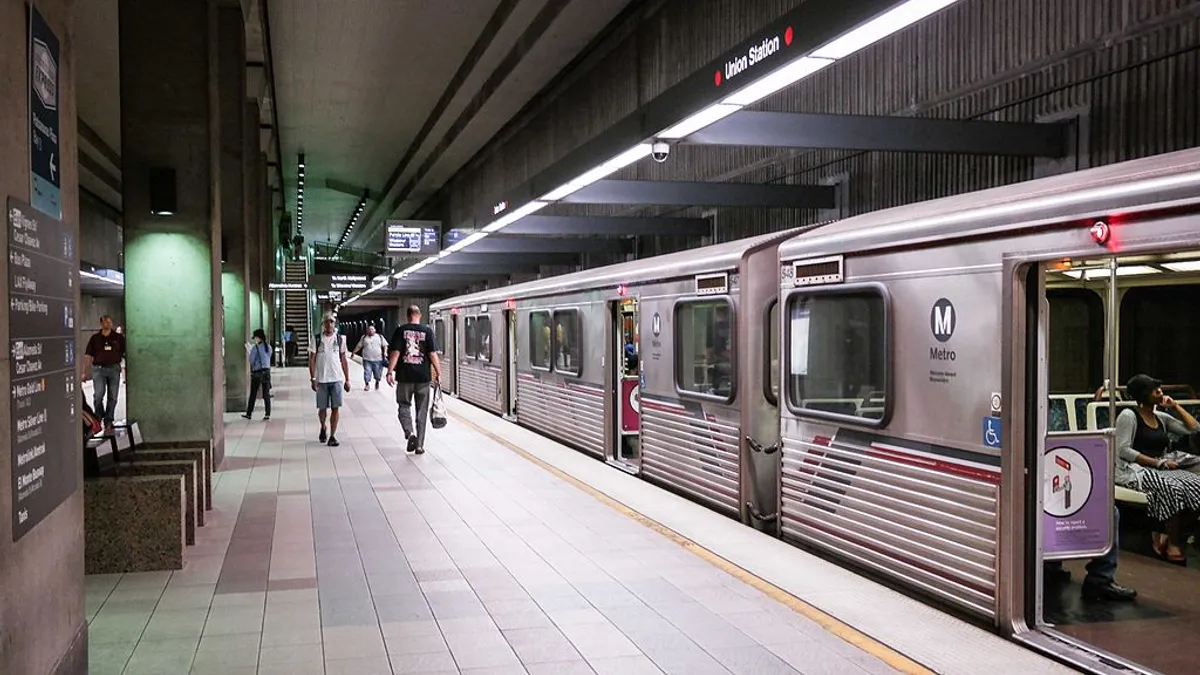Dive Brief:
- General contractor Tutor Perini announced June 15 that the Los Angeles County Metropolitan Transportation Authority (Metro) issued a notice of intent to award the company and its joint venture partner Frontier-Kemper a $410 million tunnels contract for the Purple Line Extension 3 project.
- The JV will design and build twin-bored tunnels that will accommodate subway service along the third and final, 2.6-mile phase of the city's Purple Line extension from downtown Los Angeles to the Westside region.
- The project should be in the preconstruction phase until December 2019. That work includes advanced utility relocation that will clear the way for station construction and, at the same time, maintain telecom, gas, water, power and sewer services. The Metro expects the project to be complete by 2026.
Dive Insight:
Crews will dig tunnels for all three phases of the Purple Line. Tunneling for the first phase is expected to begin this August with two boring machines dubbed Elsie and Soyeaon digging parallel paths that will connect new stations between the city's Koreatown and Beverly Hills neighborhoods.
The Metro awarded Tutor Perini and another JV partner, O&G, a $1.4 billion contract last year to build the $2.5 billion second phase of the Purple Line extension, which is about the same length as the third phase and is expected to be complete in 2025. Preliminary work started this spring.
Tutor Perini is also a design-build contractor for the California High-Speed Rail Authority's $77 billion bullet train that will one day connect Anaheim, California, to the San Francisco Bay area. That project hit the latest in a string of financial and logistical bumps in January when the authority ordered Tutor Perini to demolish a partially built bridge and get to work on a redesign. The authority said the bridge did not meet its level of quality for a work product and showed signs of distress. Three other system bridges that have not yet entered the construction phase are now undergoing a redesign as well.
According to company officials, the authority approved the original earthen-wall design for the bridge, but experts reportedly told the Los Angeles Times that the area's soil was not suitable. The authority instead has opted for a bridge design that features cast-in-place concrete. Since the authority approved the now-scrapped design, Tutor Perini will likely submit a change order for the demolition, new design and reconstruction, potentially adding to the high-speed rail's escalating costs.














